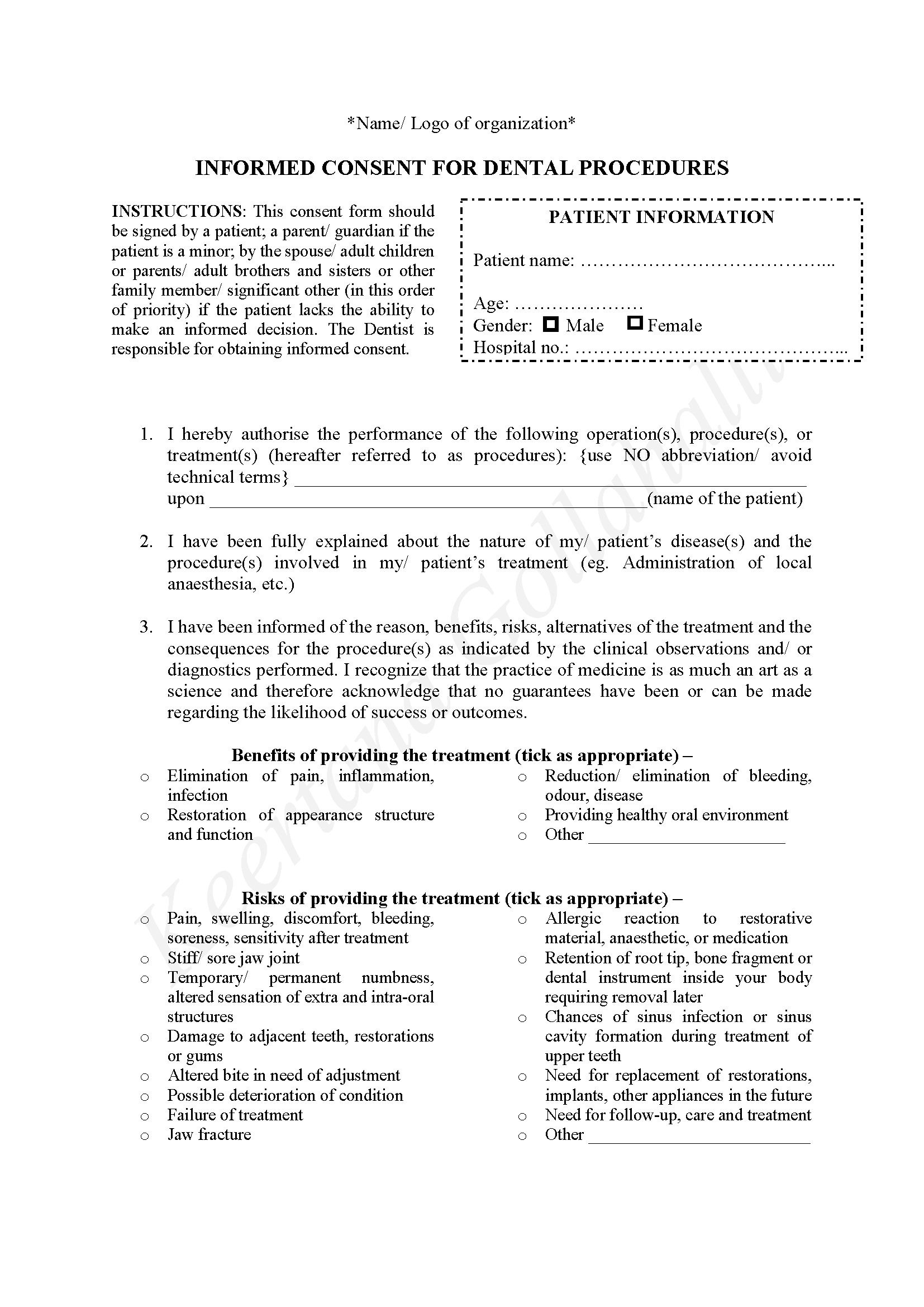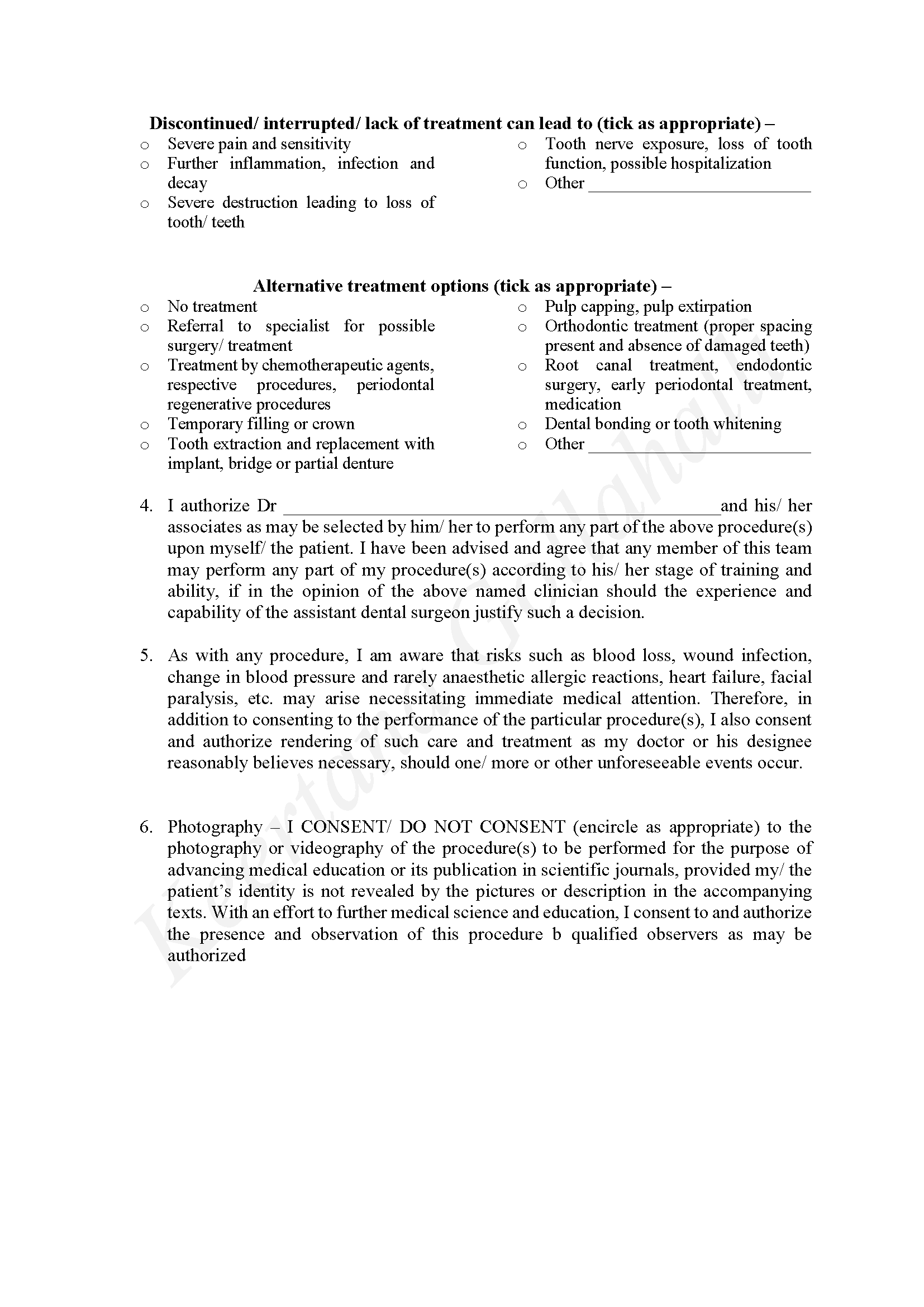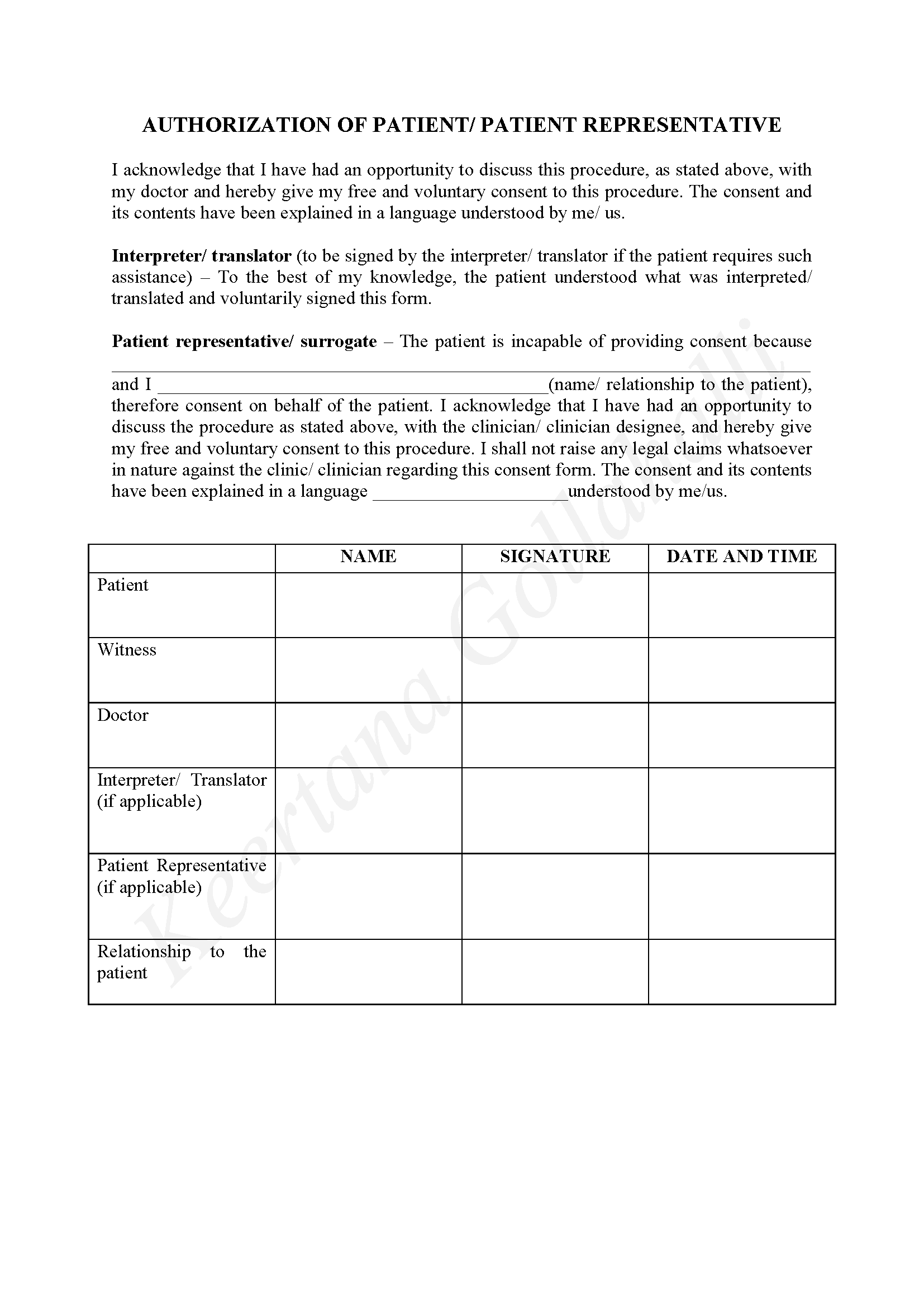Dentistry 101: Informed Consent
• Dentistry 101 • 4 minutes to read

It is every medical practitioner’s ethical, moral and legal obligation to give the patient the choice of whether they want the treatment or not. Just the fact that they show up at your clinic does not mean that they consent to any and every proposed treatment. It is an insurance held by the practitioner, should the patient ever accuse them of malpractice (prevention is better than cure).
Consent taking also emphasizes one of the four pillars of medical ethics - Autonomy [2]. Autonomy is the right of every individual to choose for themselves and it is the responsibility of every clinician to provide the accurate and true information. Allow the patient to make their own choice, it doesn’t necessarily have to be what you would do/ choose. When faced with a difficult choice, patients usually tend to seek the clinician’s opinion. It is acceptable to suggest, but it is absolutely unagreeable to push (so annoying).
Any medical practice is built purely on trust (sounds intense!). The patient trusts the clinician to provide them with optimum care to the best of his/her ability. The clinician trusts the patient to disclose all significant information that they might need to provide that care. In the random, rare cases where there is a lack of trust from either one, or both parties, having a physical proof of patient’s consent plays a major role.
A little anecdote from my own experience -
I was once assisting a Dentist who happened to perform a root canal treatment for tooth 16 [3] (upper right first molar) on a 57 y/o man, a few years prior. At the time, he had explained to the patient, the benefits, risks, alternative treatment, all of which was accepted by the latter who then signed a consent form; this document was scanned and stored digitally. A while later, the patient turned up with pain arising from the tooth. On examination, the Dentist discovered a failure of the root canal treatment, and their final diagnosis was vertical root fracture [4] (in most instances, can only be resolved by extraction of the tooth and replacement with an implant).
The patient was understandably distraught, as he did spend a considerable amount of money on the treatment which has now failed (it does happen on occasion, doesn’t mean incompetence!), causing further need for more expensive treatment. He verbally accused the Dentist of withholding information about the potential risks that may be involved with the procedure.
The clinician was able to circumvent this serious implication because of the digital proof available. Such an occurrence (rarely happens) underlines the importance of forward-thinking.
Human memory may sometimes falter but technology has advanced to such a point that one little click today can save us a lot of trouble even 10 years down the line. This story just proves the significance of having written/ digital proof.
A consent form is not just a yes/no document. It should entail several details and be taken PRIOR to every procedure [1]. When the patient first arrives at the clinic, the first consent form they sign includes the following points -
- Do they consent to the Dentist assessing their oral condition and formulating a diagnosis and treatment plan?
- Do they consent to their records being disclosed if a referral is necessary?
- Do they consent for their information to be disclosed to a third party assisting with insurance claims and the like?
- Information regarding privacy protection – all data will be stored for up to 10 years by the clinician. Copies of data might be released in an event of criminal identification.
Apart from this, separate forms for various procedures allow very little scope for error and reduce possibility of omission. You could either create your own forms or get legal advice on formulating one for your practice.
A detailed consent form for any procedure should include – Images, description of the procedure, benefits, potential risks, statistics (where needed), alternative treatment options, cost. All information written in simple language and read out/ discussed with the patient before they sign it.
All this excessive, never-ending paperwork just to save your own neck? No, not really. You are also protecting your work environment, your colleagues and most of all, the patient. Every step is a necessity, and every inch gained is one step closer to your ultimate goal, to do your part in helping the world smile once again.
Consent Form Template



References -
- https://www.oralhealthgroup.com/features/top-10-legal-tips-for-obtaining-consent-in-dentistry/
- https://www.themedicportal.com/application-guide/medical-school-interview/medical-ethics/medical-ethics-autonomy/
- https://www.thaidentalcenter.com/numbering.html
- https://www.ncbi.nlm.nih.gov/pmc/articles/PMC4001262/